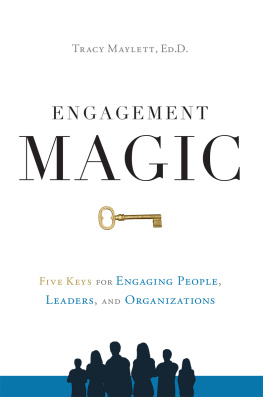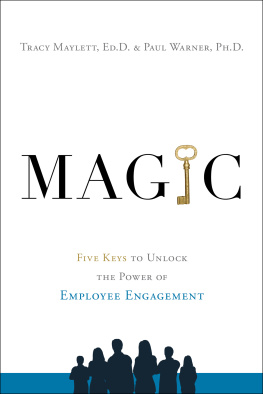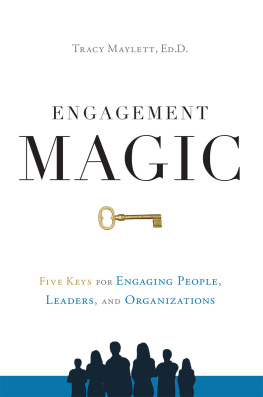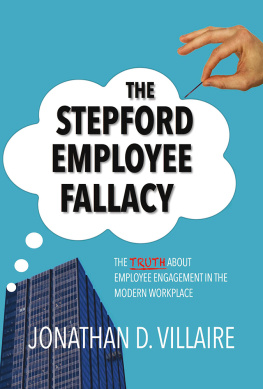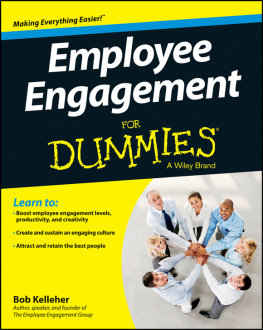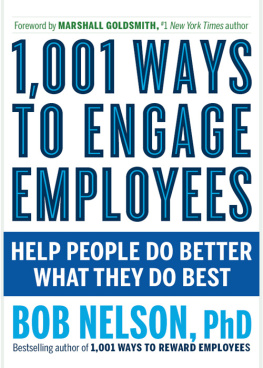
This publication is designed to provide accurate and authoritative information in regard to the subject matter covered. It is sold with the understanding that the publisher and author are not engaged in rendering legal, accounting, or other professional services. If legal advice or other expert assistance is required, the services of a competent professional should be sought.
Published by Greenleaf Book Group Press
Austin, Texas
www.gbgpress.com
Copyright 2014, 2019 DecisionWise, LLC
All rights reserved.
Thank you for purchasing an authorized edition of this book and for complying with copyright law. No part of this book may be reproduced, stored in a retrieval system, or transmitted by any means, electronic, mechanical, photocopying, recording, or otherwise, without written permission from the copyright holder.
Distributed by Greenleaf Book Group
For ordering information or special discounts for bulk purchases, please contact Greenleaf Book Group at PO Box 91869, Austin, TX 78709, 512.891.6100.
Design and composition by Greenleaf Book Group
Cover design by Greenleaf Book Group
Cover image: iStockphoto/4771306/Hypergon Inc.; Shutterstock/67686535/Yuriy Boyko
Publishers Cataloging-in-Publication data is available.
Print ISBN: 978-1-62634-617-8
eBook ISBN: 978-1-62634-618-5
Part of the Tree Neutral program, which offsets the number of trees consumed in the production and printing of this book by taking proactive steps, such as planting trees in direct proportion to the number of trees used: www.treeneutral.com

Printed in the United States of America on acid-free paper
19 20 21 22 23 24 10 9 8 7 6 5 4 3 2 1
Second Edition
To family, friends, valued client partners, and colleagues... my magic.
CONTENTS
BEYOND MAGIC
In the fall of 2014, my colleague, Dr. Paul Warner, and I released the book MAGIC: Five Keys to Unlock the Power of Employee Engagement. But the book didnt start there; it began nearly twenty years prior, as our organization, DecisionWise, conducted our first employee engagement survey.
At that time, the concept of employee engagement was largely unknown. Companies had just begun to understand the idea of employee satisfaction and the notion that maybe, just maybe, the employee experience had some impact on the bottom line. If it truly did impact the bottom line, wouldnt it make sense to measure what employees felt? And thus, the idea of the employee survey began to catch on.
As our firm spent the next decade knee-deep in employee survey administration and data, themes began to emerge. First, it was clear that engagement does impact the bottom line. There is no doubt that organizations with higher levels of employee engagement tend to outperform other organizations in financial measures, customer service, employee retention, quality, innovation, and a host of other key performance indicators.
Second, an excellent customer experience (CX) is the direct result of a superlative employee experience (EX). Thus, if an organization wishes to drive customer satisfaction, it has to first start with the employee experience. From this concept, my colleague Matthew Wride and I released the book The Employee Experience: How to Attract Talent, Retain Top Performers, and Drive Results. That book was an instant success and best seller, largely because organizations resonated with the concept that EX = CX.
Third, we discovered that engagement is a competency. This was a monumental find, as it meant that engagement can be learned, practiced, taught, measured, and even expected of employees and managers, and that they can be held accountable for engagement. This also meant that engagement isnt something thats simply felt; it requires action. A feeling without action is just thata feeling. But feelings arent results, and organizations arent hiring people simply to feel. Engagement involves both feeling and acting.
In 2014, our research database was made up of 14 million employee survey responses. Over the past four years, that database has more than doubled to over 32 million survey responses. Thats a lot of data! Which brings me to the final point.
With the doubling of the research database, the concepts in the first bookthe idea that the keys to employee engagement could be explained by the acronym MAGICwere validated time and time again, both by research and the practical experience of our clients.
In 2018, DecisionWise finished another chapter in the ongoing journey to understand employee engagement, and brought this updated research to this new book, Engagement MAGIC. Written as an update to the first book, and including these new findings, Engagement MAGIC provides updated case studies, stories, examples, and research. I am confident that you will find these keys as essential in your individual and organizational engagement as our clients have discovered them to be in theirs.
So, bring the magic.
Tracy M. Maylett, Ed.D.
INTRODUCTION
IMAGINE IF ONE-THIRD of the people at your company felt that they could not speak up at work for fear of negative consequences. What would that say about your organization? Would it suggest an environment that stifles free expression? Most important, what would be the consequences of such a culture of silence?
Many organizations dont have to imagine this scenario, because its happening right under their noses. Analysis of more than 30 million DecisionWise Employee Engagement assessments revealed something shocking: 34 percent of all employees are afraid to speak up at work because they believe they will be subject to retribution. Thats a major symptom of disengagement. And what if you were one of these employeesor have you been there, done that?
The outcome? Impaired innovation, reduced safety, and poorer-quality work, for starters. When employees cant speak up about dysfunctional policies or processes, they wind up feeling powerless to direct their work in a way that makes the company competitive.
Okay, so what happens when employees are fully engaged in their work? When we analyzed the publicly traded companies that scored in the top 10 percent and bottom 10 percent of our Employee Engagement assessments, the results were just as dramatic... but a lot more favorable. The companies that scored in the top 10 percent in employee engagement were considerably more profitable, grew faster, and had lower turnover than the companies in the bottom 10 percent.
Example: CHG Healthcare Services is at the top of our list with an incredible engagement score that consistently exceeds 90 percent (meaning that over 90 percent of survey question responses are favorable). They have been ranked as high as number three on Fortunes 100 Best Companies to Work For list, in the same league as titans like Google and SAS. They are the most profitable company in the health-care-staffing industry.
However, before CHG launched its Putting People First program and transformed its moderately engaged corporate culture, the companys turnover rate was negatively impacting growth. Today, turnover is half the industry average, and CHG even managed to grow revenue and profits during the 20082011 recession while their industry peers saw profitability plummet.
CHG Healthcare Services didnt change on a dime. It took extensive planning, conscious effort, hard work by leaders and teams, and consistent follow-through to gain the trust of employees and transform the companys culture. But the results speak for themselves.
Next page
